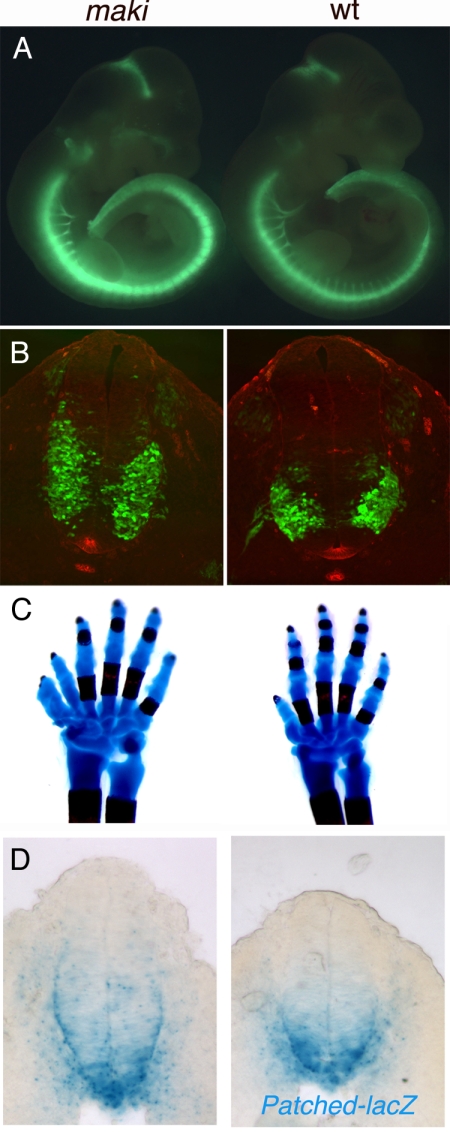Fig. 1.
The maki phenotype. (A) The expression of HB9-eGFP is stronger in maki than in wild-type E10.5 embryos. (B) Cross-sections through the brachial region of E10.5 embryos. HB9-eGFP is green; Shh protein expression is red. The domain of HB9-eGFP is expanded dorsally in maki embryos, whereas the domain of Shh expression in the floor plate is the same in maki and wild type. Dorsal, up. (C) Skeletal preparations of postnatal day 1 forelimbs show that maki embryos have preaxial polydactyly; this defect is completely penetrant. (D) Sections through the brachial neural tube of E9.5 embryos carrying a Ptch1-lacZ transgene, stained for β-galactosidase activity.

